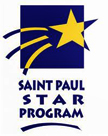Batik |
|---|
 |
B1: This is a batik work, but the red appliqué features draw the most attention. The motif used includes an overlapping diagonal bar with extensions. As a whole, the design looks like a fence motif. The batik motifs include leaf fronds and fences. A batik frame was completed using seed motifs as embellishments, and the white and red borders complement the batik and
By Chong Vang, 1980s, 22x22 cm |
Back to Top |
 |
B2: This is a batik artwork featuring several motifs including a fence, a leaf frond, seeds, and an extended diagonal bar. The main motif in this work was created using appliqué, sewn onto a batik work. Each motif was sewn with an overlapping extension, and as a whole, the work involves a larger version of the fence motif.
By Ai Thao, 1980s, 17x17 cm |
Back to Top |
B3: This batik work features several motifs, such as fences, seeds, mountains, and diamonds. The red motif, a square fence with overlapping extensions, was embroidered in appliqué. Such batik work could serve as the top panel for a baby carrier. The frames were also created in white, black, and red using appliqué techniques.
By an unknown artist, 1980s, 25x26 cm |
Back to Top |
 |
B4: This paj ntaub was done in batik and appliqué with motifs of leaf fronds, fences, seeds, and crosses. There is a repetition of the motifs throughout. The appliqué is done with blue cotton cloth, folded and sewn with plain blanket stitches to complement the batik designs.
|
Back to Top |
 |
B5: This is batik artwork. Hmong women draw the designs in hot wax with a copper-tipped waxing tracer onto a white cotton cloth, and dye it with indigo. What is left are the motifs of fences and leaf fronds repeated through the whole piece. The blue appliqué is sewn onto this piece with plain blanket stitches in the motifs of snails and modified crab claws.
|
Back to Top |
 |
B6: This piece of tapestry was done in batik and appliqué. The motifs include mountains, leaf fronds, crosses, fences, and seeds, all repeated. The appliqué motifs, duplicating the batik motifs, are sewn with red, white, and blue cotton cloth in plain blanket stitches. A white appliqué border was sewn onto a blue background.
|
Back to Top |
 |
B7: The approach used for this piece involved batik, and a border of appliqué work. Batik is done on a white cloth, then dyed with indigo. All of the batik designs are leaf fronds, with a repetition of the pattern through the whole piece. Blue fabric was sewn as appliqué to create the pinwheel embellishments, which look like flower embellishments, but are larger in size. As a whole, they complement the batik leaf fronds motif.
|
Back to Top |
 |
B8: The red appliqué featured in this batik tapestry includes a combination of cross, diagonal bar, fence, and overlapping extension fence motifs. The solid outer fence design is decorated with square flowers in pink, blue, and white. The batik work is identical to the appliqué, except that it has a leaf frond motif.
By Zang Judy (last name unknown), 1988, 41x40 cm |
Back to Top |
 |
B9: This is an incomplete baby carrier of batik and appliqué, missing the top panel and long straps. The method and technique are used only in baby carriers. |
Back to Top |
 |
B10: Normally, paj ntaub of village life and daily activities are embroidered with threads of many colors. However, this is an unusual scene done in batik. The figures are traced in hot wax with a pattern tracer, the method found in Green Hmong batik work. The villagers are
By Chong Vang, 1980s, 39x38 cm |
Back to Top |
Page 1 >> Page 2 |



